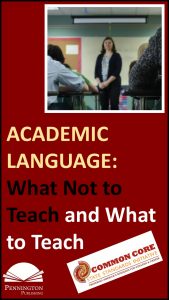How to Teach Connotations | Shades of Meaning Vocabulary
Some of our English words are quite imprecise and have shades of meaning. Whereas the Greeks have at least four words for love, we only have one. How crazy is it that we can say, “I love you darling, and I also love hot dogs” in the same sentence? Some of our English words are extremely precise. When we’re discussing walking, we can use that general word, as in this example: Walking through the park, we stopped to feed the birds. However, we can assign more precision to the gerund by saying the following: Ambling, or Sauntering, or Cruising, or Strolling Walking through the park, we stopped to feed the birds.
Whether the words we choose to say or write are imprecise or precise in the denotative sense (what the dictionary says), we pour meaning into the words (connotations) by the way we use the words and the surround context clues. After all, we could say, “I love you darling” in a romantic sense, in a sarcastic, mocking sense, or in a humorous sense. It all depends on the communication clues we provide.
However, words do mean something on their own and it makes sense to teach our students what they do mean apart from the surrounding clues to help developing speakers and writers make proper word choices. Teaching the connotative meanings of words is best facilitated through the use of synonyms.
The writers of the Common Core Vocabulary Standards include connotative vocabulary acquisition in CCSS L.5.c.:
- Multiple Meaning Words and Context Clues (L.4.a.)
- Greek and Latin Word Parts (L.4.a.)
- Language Resources (L.4.c.d.)
- Figures of Speech (L.5.a.)
- Word Relationships (L.5.b.)
- Connotations (L.5.c.)
- Academic Language Words (L.6.0)
How to Teach Connotations
One great way to teach connotations is with semantic spectrums. Just like a rainbow is a color spectrum, certain vocabulary words can be placed within their own spectrum of meaning (semantics). Typically, when using semantic spectrums to introduce new words, the teacher selects two new words which have connotative meanings. The teacher provides the definitions of the two new words (or students look them up), and students write these new words on a semantic spectrum to fit in with two similar words, which most of your students will already know. For example, the two new words, abundant and scarce would fit in with the already known words, plentiful and rare, in this semantic order: abundant–plentiful–scarce–rare.
In my three standards-based vocabulary programs (described below with free downloads), my semantic spectrums look like this:
Notice that the parts of speech are all verbs for both the new words and already known words in the first example. In the second example, the new words are nouns, but the already known words are adjectives.
It makes no difference whether the parts of speech are consistent or not for the purposes of learning the connotations. Plus, it provides a nice means of extended learning, should you choose to use the teachable moment.
Teacher: Notice that social and shy are what kind adjectives. What inflected endings would we have to add onto our vocabulary words: extrovert and introvert to make them into what kind adjectives?
Students: “ed.”
Teacher: Who could use the adjective forms in a sentence to show their meanings? What transition words would most likely be used to show the differences between extrovert and introvert? Can anyone think of another word to fit in our spectrum? Yes, you can use your thesaurus.
Semantic spectrums are wonderful teaching tools to help students master Connotations (L.5.c.) Standard. I provide 28 semantic spectrums for each of my vocabulary programs, different ones for each 4, 5, 6, 7, and 8 grade level.
*****
For full-year vocabulary programs which include multiple meaning words (L.4.a.), Greek and Latin morphology with Morphology Walls (L.4.a.), figures of speech (L.5.a.), words with special relationships (L.5.b.), words with connotative meanings (L.5.c.), and academic language words (L.6.0), check out the assessment-based grades 4, 5, 6, 7, and 8 Comprehensive Vocabulary.
Get the Grades 4,5,6,7,8 Vocabulary Sequence of Instruction FREE Resource:
![]()
Get the Greek and Latin Morphology Walls FREE Resource:
![]()
Get the Diagnostic Academic Language Assessment FREE Resource:
![]()









